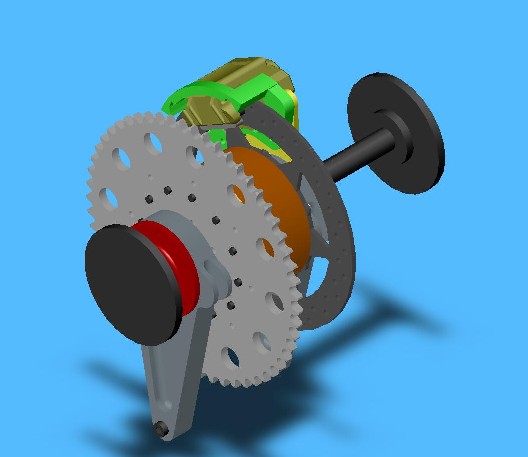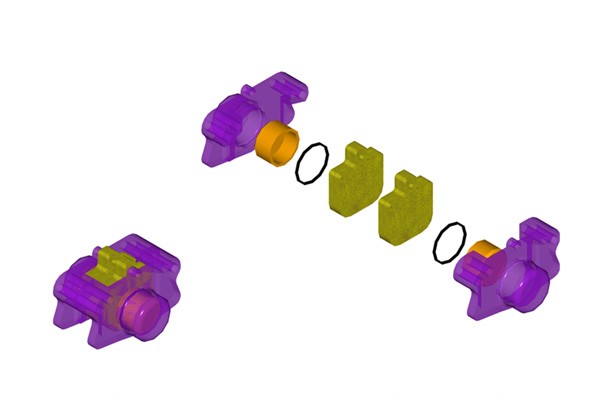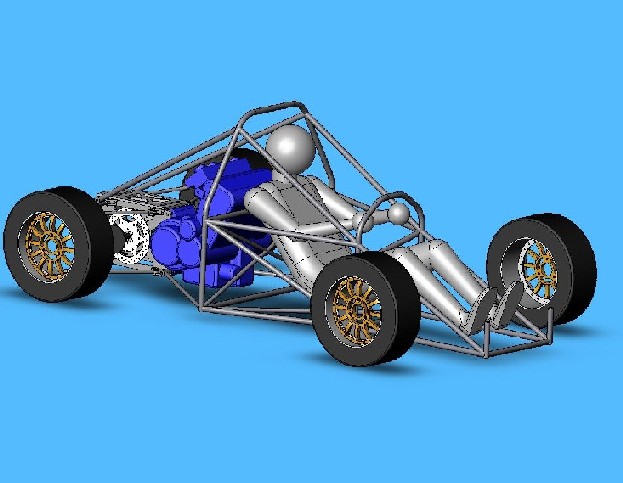 |
||||||||
Introduction
The following portfolio exists to demonstrate some of the skills and projects I have completed throughout the course of my career. Manufacturing and design skills have been concentrated on, along with proper engineering practices.
Most of the design work demonstrated here is a result of my involvement with the Temple University FSAE program. During my 4 years at Temple I was heavily active in this organization, serving as team captain in my final 2 years. The team consisted of only 5 people, including myself, which forced me to become familiar with all aspects of vehicle design. As a result from my racing experience with Temple, I have continued the design effort in my personal time, in hope of fielding a competitive "A modified" class SCCA car.
Skills
CAD and Design Skills
The following components were designed in Solidworks for an SCCA "A Modified" application. The components below were designed with maximum strength and minimum weight in mind. Cosmosworks was used to analyze the components.
Additionally, some components were designed in Autocad. These components are generally from my first generation of designs, before Solidworks was implemented. The same design mindset was used in their development.

Three lug wheel hub / rotor hat for an FSAE vehicle. This design incorporates a six spoked rotor hub to mount the brake rotor directly to the hub, eliminating a rotor hat as in conventional designs. It provides ideal spacing and scrub radius using Keizer 13 inch wheels.

Drivetrain for an FSAE/"A modified" vehicle. It is designed around a Zexel Torsen limited slip differential unit, which is extremely common in FSAE applications.

AutoCAD solid model of custom 2 piston brake caliper. One of the products of my Sr. Design project which involved developing a lightweight braking system.

Solidworks model of an "A Modified" class racecar. Its based around a 1300cc Suzuki Hayabusa engine and a fully independant suspension. This vehicle is still in the developmental stages. More pictures of it can be seen HERE.

Rudimentary CFD on a DSR type racecar using Floworks. (Surface Pressure) 60mph in 75 degree Fahrenheit air.

Rudimentary CFD on a DSR type racecar. (Flow trajectory) 60mph in 75 degree Fahrenheit air.
Manufacturing
Drivetrain component (differential carrier) on CNC mill. Code was generated in Mastercam and then parsed by hand.
Finished differential carrier.
Centering a caliper housing on the CNC mill for final machining, using a Starrett "Last Word" dial indicator.
Custom 2 piston caliper for an FSAE application. Piston housing machined on a manual lathe and then transferred to CNC mill for housing machining.
Wheel hub / brake hub used in 2004 competition. Manufactured on the CNC mill and manual lathe.
Manual machined brake pistons.
Fabrication
Turbocharged Honda F3 on the engine dyno. This system was designed by an associate of mine, Pat Rexing, while I was a freshman at Temple. I helped fabricate some of the parts for this engine and aide in assembly. I also learned to load tune on this engine using a Haltech E6A engine computer. Over my four years at Temple I continued to improve and refine this system after Pat had graduated.
Several modifications were made to the F3 to make it compatible with the turbocharger. Hall effect sensors were added to the head in order to drive the Haltech, since this engine came equipped with carbs. Also, custom trigger wheels were designed and fabricated to attach to the camshaft gears to drive the sensors. The head was rebuilt with stiffer springs and the valve seats were reground. The intercooler end tanks and intake runners were all fabricated in house at Temple. The turbo used is an Aerodyne Aerocharger variable geometry turbo.
Temple FSAE chassis 2004. This chassis was fabricated entirely from an Autocad model, and then TIG welded. Design emphasis was placed on being lightweight and achieving maximum torsional stiffness.
Temple FSAE chassis 2004. All TIG welding was performed by me. Most of the tube notches and tube fitment was provided by an associate of mine, Jason Holloway.
Temple FSAE chassis 2004, completed rear box. The completed drivetrain can be seen here, along with the suspension pushrod, bellcrank and damper.
Front upright, before final welding and addition of gusset plates. The upright houses a titanium dead spindle, which is pinned in place. This picture also shows that the brake rotor mounts in double shear with this design.
Simple brake test stand built to test rotors built for Sr Design project. Using a Briggs and Stratton 16hp V-twin industrial engine, we were able to heat the rotors up to operating temperatures and test our brake calipers. An interesting note is that this device was constructed for virtually no money, using parts that were being discarded by the University.
Close up of brake test stand and custom AL rotor after several hours of testing. Also visible is the OS-101 infrared pyrometer. This sensor was used with a high speed data acquisition system in order to rate the performance of the rotors. Click HERE to see a sample of the collected data.